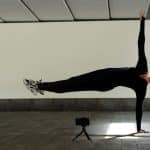In the world of sports, and particularly in table tennis, the importance of visual-spatial skills cannot be overstated. These skills, which include the ability to perceive and interpret visual information about where objects are in space, play a crucial role in determining how well you can perform in table tennis. In this article, we will explain what visual-spatial skills are, why they are essential in table tennis, and how you can enhance them for better performance in the game. We will also share tips on exercises that could help improve these skills.
Understanding Visual-Spatial Skills
Before we delve into improving visual-spatial skills, let’s take a moment to understand what they entail. Visual-spatial skills involve the ability to perceive, analyze, and understand visual information in the context of the surrounding space. These skills enable you to judge distance, depth, and size, and to interpret shapes, directions, and spatial orientations.
Additional reading : What Are the Latest Advances in Wearable Cooling Technologies for Endurance Athletes?
In the context of table tennis, visual-spatial skills are vital because they allow you to quickly and accurately judge the speed, spin, and direction of the ball, and to anticipate where it will land. They also help you to position yourself correctly in relation to the table and your opponent. In other words, they are fundamental to your ability to respond effectively to your opponent’s shots and to plan and execute your own shots.
The Importance of Visual-Spatial Skills in Table Tennis
Table tennis is a fast-paced game that requires quick reflexes and precision. Every shot you make or receive is a result of a rapid processing of visual information. This includes judging the speed and spin of the ball, predicting its trajectory, and responding appropriately.
Additional reading : What’s the Impact of Microdosing High-Intensity Training for Middle-Distance Runners?
Visual-spatial skills are, therefore, at the heart of table tennis. They enable you to assess the ball’s movement, anticipate its landing point, and position yourself to strike it effectively. Without these skills, your accuracy, timing, and overall performance could suffer.
Enhancing your visual-spatial skills could significantly improve your table tennis performance. It could lead to better shot accuracy, enhance your ability to anticipate and react to your opponent’s moves, and could even contribute to developing a more strategic approach to the game.
Enhancing Visual-Spatial Skills for Table Tennis
There are several ways to enhance your visual-spatial skills for better performance in table tennis. These include specific exercises designed to improve your spatial awareness, hand-eye coordination, and visual acuity.
Exercises for Spatial Awareness
Spatial awareness is about understanding where you are in relation to other objects in your surroundings. For table tennis players, this means being aware of your position in relation to the table, the ball, and your opponent.
One exercise to improve spatial awareness is the ‘Blind Catch’. This involves having a partner throw a ball at you while you’re not looking. You turn around and try to catch the ball at the last moment. This exercise trains your brain to quickly process spatial information and respond appropriately.
Improving Hand-Eye Coordination
Hand-eye coordination is a key aspect of visual-spatial skills. This involves the ability to coordinate the movement of your eyes with your hands. In table tennis, this skill is crucial for accurately striking the ball and responding to your opponent’s shots.
Juggling is a great exercise to improve hand-eye coordination. Start with two balls, then progress to three as your skills improve. Juggling not only improves your hand-eye coordination but also enhances your spatial awareness and reflexes.
Enhancing Visual Acuity
Visual acuity refers to the sharpness of vision. In table tennis, this skill is essential for accurately perceiving the ball’s direction, speed, and spin.
A simple exercise to enhance visual acuity is the ‘Card Rotation’ exercise. This involves holding a playing card at arm’s length and rotating it quickly. Your task is to identify the card’s suit and number as it spins. This exercise can help improve the detail and speed of your visual perception.
Remember, enhancing your visual-spatial skills takes time and consistent practice. Regularly performing these exercises can help you improve these skills and, in turn, your performance in table tennis.
The Role of Equipment in Enhancing Visual-Spatial Skills
While exercises and drills play a crucial role in improving visual-spatial skills, the equipment you use can also make a significant difference.
In table tennis, using a ball of a contrasting color to your surroundings can help improve your visual acuity and depth perception. Similarly, playing in a well-lit environment can enhance your visual clarity, allowing you to better see the ball’s speed, direction, and spin.
Remember, while improving your visual-spatial skills can significantly enhance your table tennis performance, it’s only part of the puzzle. Consistent practice, physical fitness, and a good understanding of the game’s strategies and techniques are also vital for success.
Incorporating Visualization Techniques
Visualization techniques, often used by athletes, can also aid in the enhancement of your visual-spatial skills, thereby improving your table tennis performance. These techniques involve mentally rehearsing the game, allowing your brain to practice and improve your skills even when you’re not physically playing.
When it comes to table tennis, visualization techniques can help improve your anticipation, strategizing, and reaction time. Start by imagining yourself in a game situation. Visualize the ball’s speed, spin, and trajectory, and picture yourself responding to these elements effectively.
Visualization exercises can be done anytime and anywhere, making them a convenient tool for skill improvement. You can practice at home, during breaks, or even just before a game. Over time, you may notice improved spatial awareness, precision, and decision-making abilities on the table tennis court.
Remember, the key to effective visualization is regular and consistent practice. Just like physical practice, the more you visualize, the more you’ll improve your visual-spatial skills.
Conclusion
In conclusion, visual-spatial skills are vital for success in table tennis. They help you to judge the speed, spin, and direction of the ball, to anticipate where it will land, and to position yourself correctly in relation to the table and your opponent. Enhancing these skills can lead to better accuracy, timing, and overall game performance.
There are several ways to improve these skills, including specific exercises designed to enhance spatial awareness, hand-eye coordination, and visual acuity. Consistent practice of these exercises, along with the use of suitable equipment and the application of visualization techniques, can help you to hone your visual-spatial skills more effectively.
Remember, while enhancing your visual-spatial skills can significantly improve your performance, it’s not the only factor to consider. Physical fitness, consistent practice, a good understanding of the game’s strategies, and mental toughness are also crucial for success in table tennis. Now, equipped with this knowledge, it’s time to put these tips into practice and see your table tennis game improve!
















